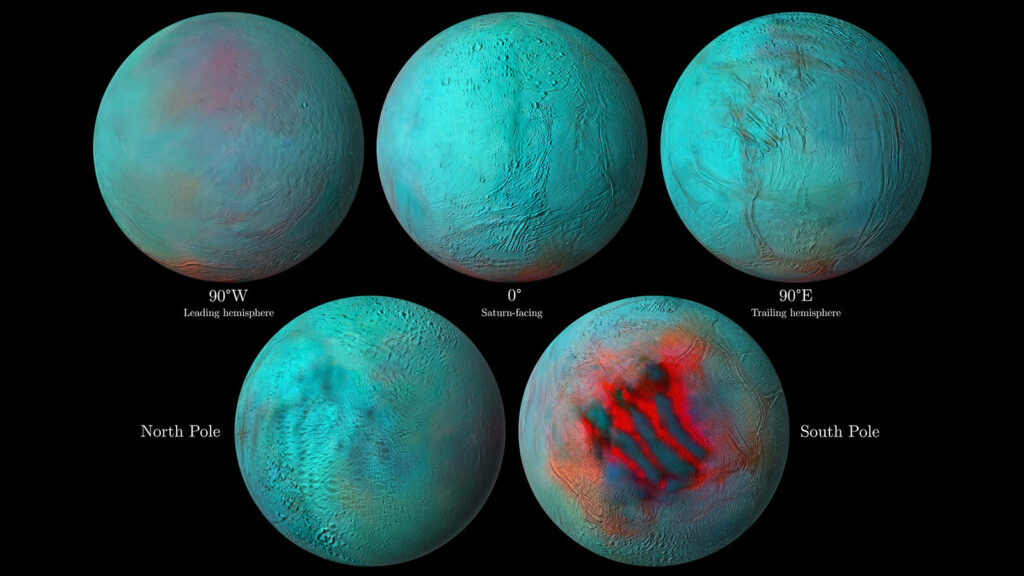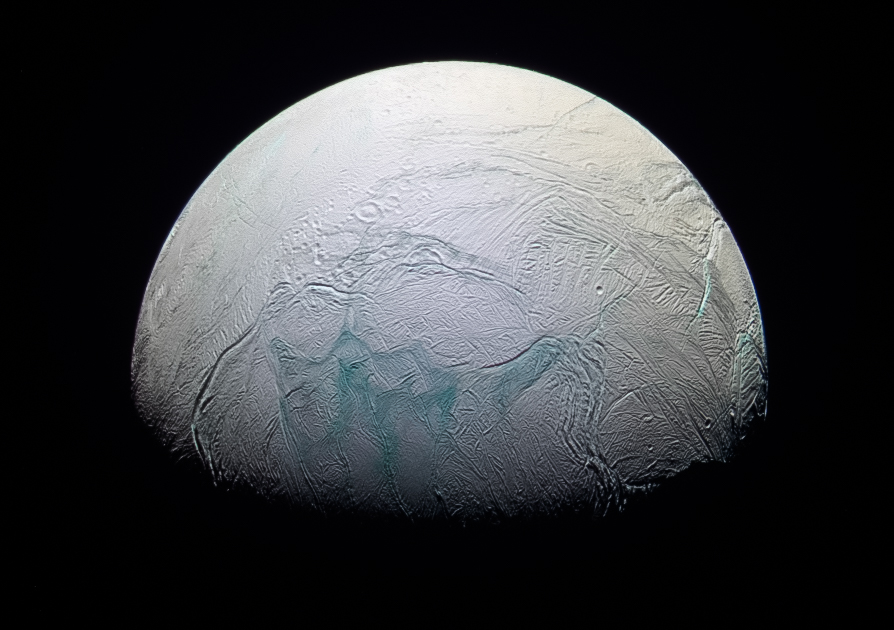Enceladus may look like a frozen snowball to the naked eye, but researchers have known for a while that there’s more to this small moon than meets the eye.
For starters, Enceladus shoots out enormous plumes of ice and vapor into space, suggesting a warm liquid ocean under the icy crust. Now, with data from the Cassini spacecraft, researchers have published an infrared mosaic highlighting Enceladus’ active geology.

New Ice
It was in 2005 that astronomers analyzed detailed images coming from Enceladus. Far from being a boring old moon, Enceladus turned out to be remarkably active in more than one way.
The first thing researchers noticed is that Enceladus features several so-called “tiger stripes”: large fractures in its icy surface. While interesting, the fractures themselves are not enough to indicate an active geology on the satellite. But when they looked at spectral data, researchers noticed another weird thing: these areas have elevated surface temperatures. They’re hotter (or rather, less cold) than the surrounding area.
The final puzzle piece came when the Cassini spacecraft found evidence of massive volcanic eruptions coming from Enceladus — erupting not with lava, as here on Earth, but rather with water. This type of cold volcanism (called cryovolcanism) strongly suggested that Enceladus has an internal source of heat and is active geologically and tectonically. Since no impact craters have been found in or around these tiger stripes, it can also be inferred that the surface of the satellite is relatively new — another indication of active geology.

The new spectral map highlights the youngest ice, showing that this clearly correlates with tiger stripes. In other words, the infrared map is a smoking gun that the tiger stripes are areas where new ice flows to the surface of Enceladus from an interior ocean, like lava flows here on Earth.
But while the tiger stripes are visible in the south pole area, some of the infrared features also appear in the northern hemisphere, suggesting that the same geological processes happen in both hemispheres. Researchers also speculate the existence of seafloor hotspots driving the moon’s geology.
“The infrared shows us that the surface of the south pole is young, which is not a surprise because we knew about the jets that blast icy material there,” said Gabriel Tobie, co-author of the new research.
“Now, thanks to these infrared eyes, you can go back in time and say that one large region in the northern hemisphere appears also young and was probably active not that long ago, in geologic timelines.”
The infrared images have been incorporated in an interactive globe which you can explore here.
The study has been published in the journal Icarus.









